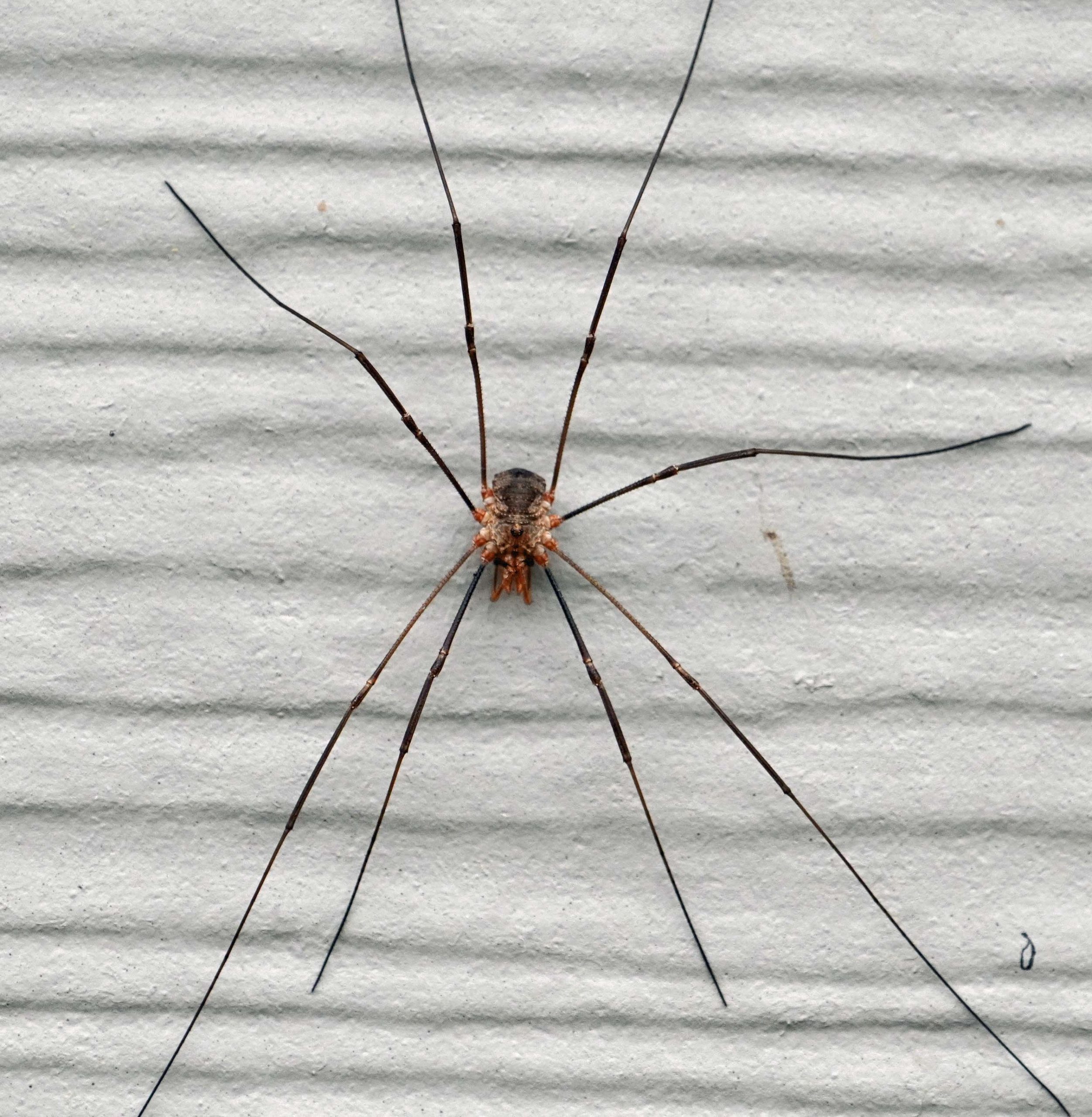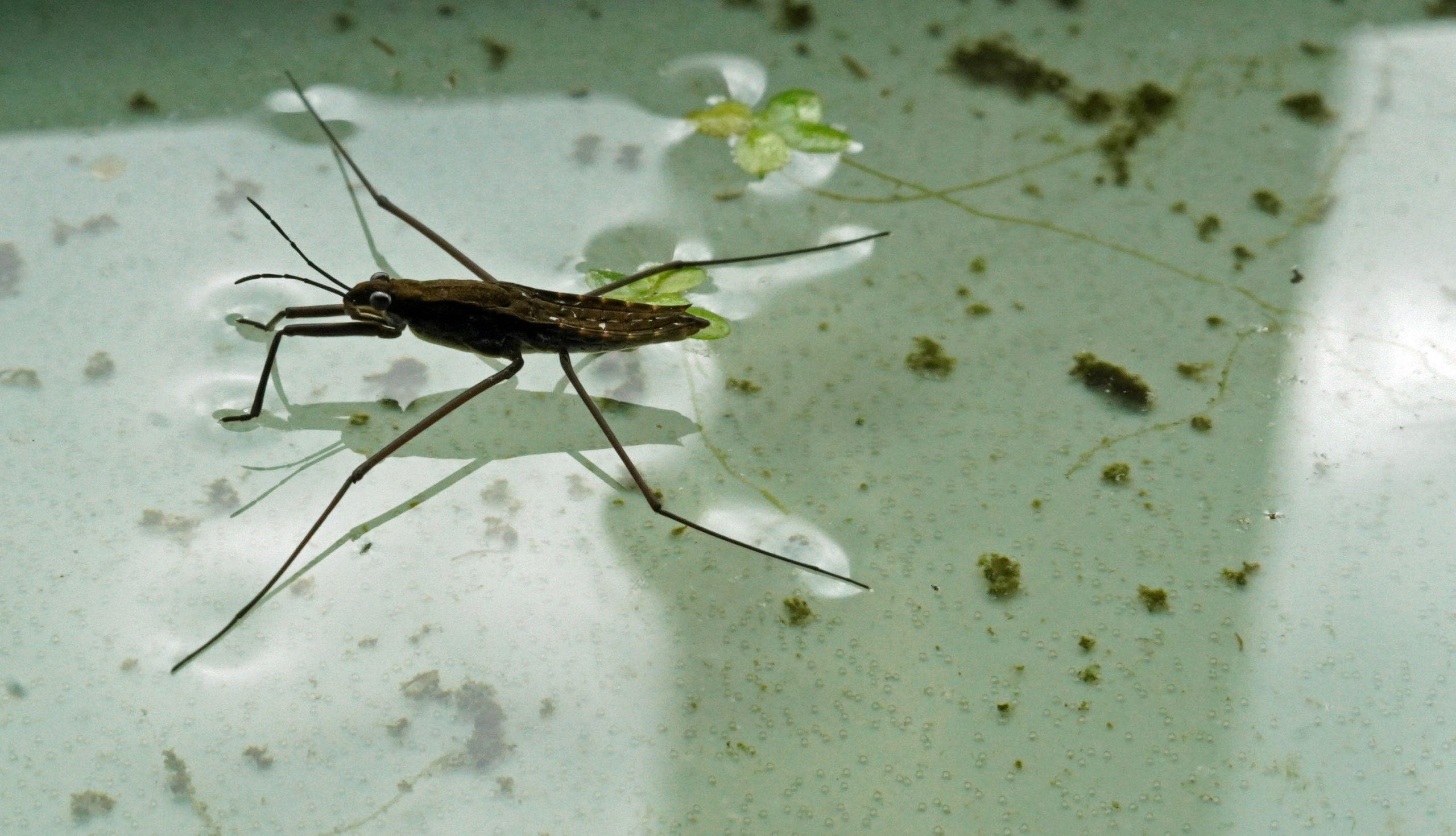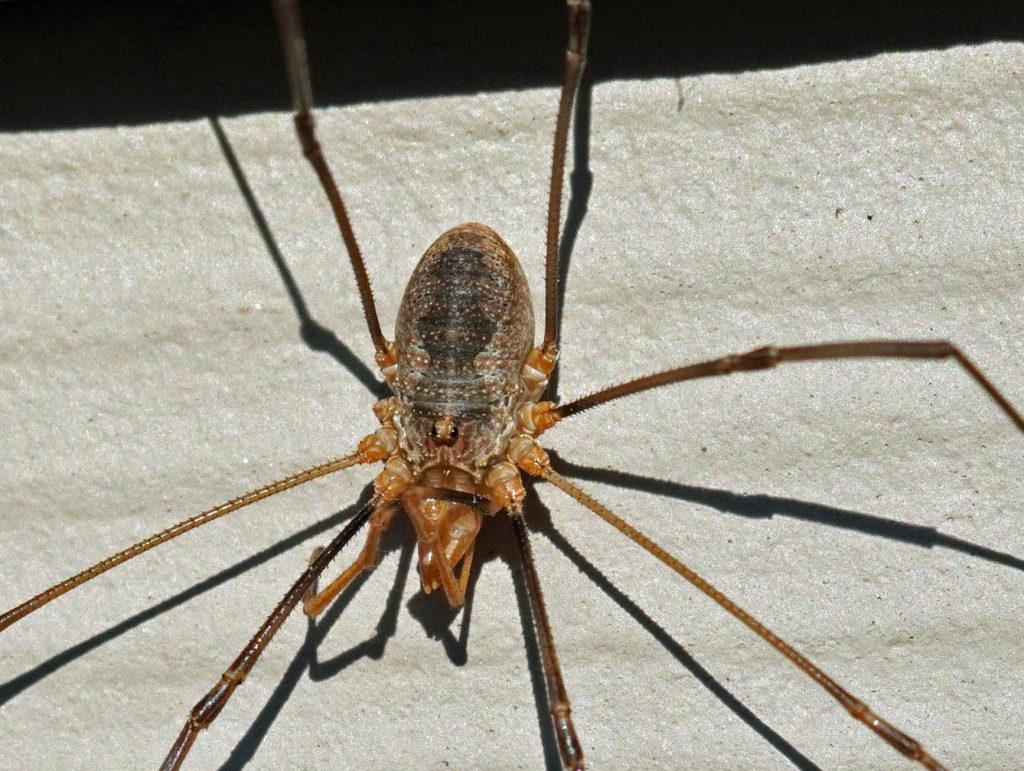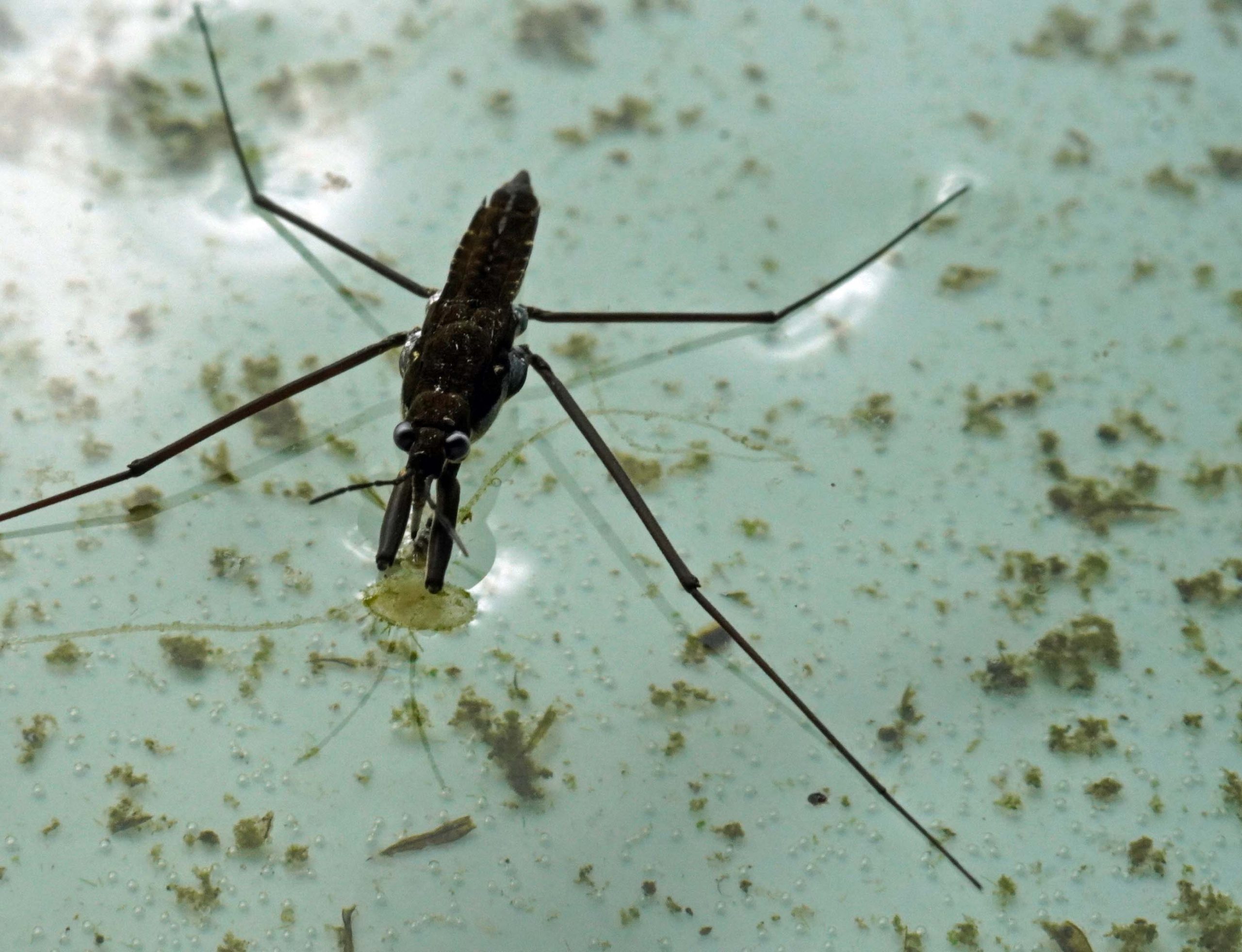Here are a couple of examples of these very interesting animals – a Brown Harvestman or Daddy Longleg, and a Water Strider. Here the harvestman demonstrates its climbing ability on the outside wall of my home, while the water strider shows of its unique water walking talent. Note the piercing designs of their prey catching anatomy on their heads. Both of these creatures will use their forelegs to initially grasp their intended meal and then stab it to complete the kill.
They are animals from two different classes (arachnids and insects) and inhabit two totally different environments. One loves water, the other hates it. One is perfectly comfortable on outside wall of your home, the other would consider it a nightmare. One is an arachnid, the other is an insect. But they share some unique similarities. Both have a very obvious long legged, small bodied physique. Both have pretty much the same food preference. And they have one other important, not so obvious trait. That one, however, you have to look quite closely to see – the reason I took these pictures and wrote this article.
Daddy Longlegs, or Harvestman, as they are called are members of the arachnid class of animals and are often mistaken for large spiders. They certainly resemble spiders in physiology but differ from spiders in one very important characteristic – the way they capture their food. Like spiders the daddy longleg diet consists mainly of small insects. And like spiders they capture their prey using chelicera that stick out from their head. Unlike the chelicera of spiders, however, the chelicera of the daddy longlegs are not venomous. They just “stab” their prey and then eat it. They don’t stop there, though. They eat dead bugs and decayed vegetation as well.
Water striders, members of the “true bug” family (order Hemiptera), are considerably smaller than daddy longlegs and you won’t find them hanging out in trees or on the side of your house – they prefer water. The freshwater species are the most common and most notable, but some species of this animal inhabit salt water. In freshwater ponds and streams you may see dozens and dozens of them wriggling about on the water surface thanks to their long legs, the bottom of which are covered in thousands of microscopic sized hairs that utilize water surface tension very effectively. Like their arachnid friends they also prefer small insects as prey (mosquito larvae are a favorite) and will gladly munch on dead insects that pop up or fall down into their environment. And like their arachnid friends water striders often attack prey by grabbing it with their front legs and piercing it with their sharp mouthpart called a rostrum that also allows them to inject digestive juices into their prey.
Check out the references below for more about these very interesting animals:
Online:
Nature.org
Encyclopedia Britannica
Hard Copy:
Field Guide to Insects and Spiders of North America – Arthur Evans
Audubon Society Field Guide to North American Insects and Spiders – Lorus and Margery Milne
Bugs of Washington and Oregon – John Acorn Ian Sheldon
<
>





Leave a Reply
You must be logged in to post a comment.